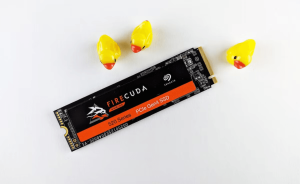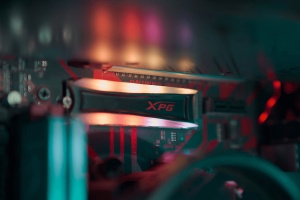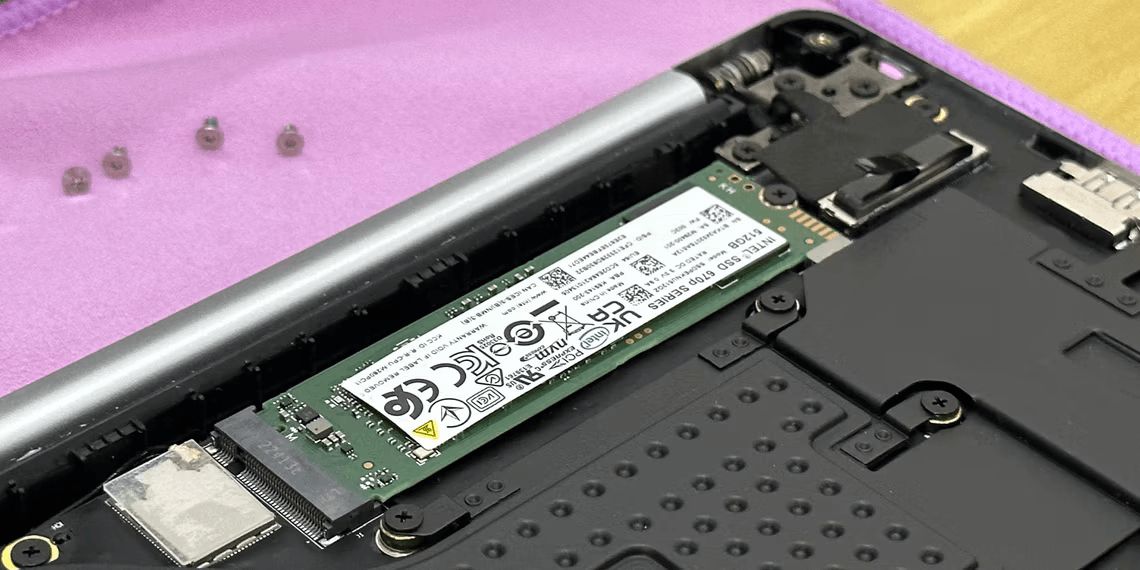The Mystery of M.2 NVMe SSD Heatsinks: Do You Really Need One?
M.2 SSDs have revolutionized the way we use our PCs, delivering astonishing read and write speeds. However, there’s a subtle component that has raised questions among users M.2 NVMe SSD heatsinks. In this article, we dive deep into the world of M.2 SSD heatsinks, exploring their purpose, types, and the burning question: do you really need one?
The Purpose of an M.2 NVMe SSD Heatsink
First things first, let’s demystify the concept of an M.2 NVMe SSD heatsink. While you might be familiar with what an M.2 NVMe SSD is, the idea of a heatsink in this context might seem peculiar. Unlike CPUs or GPUs, these heatsinks don’t come with fans, so what exactly do they do?
In essence, an M.2 NVMe SSD heatsink serves a vital role—it draws heat away from the SSD’s chips, shielding them from potential hardware damage. The absence of fans isn’t an issue because the natural convection generated by your PC’s existing fans efficiently transfers heat away from the heatsink and, consequently, the SSD. This ensures your SSD operates optimally.

Types of SSD Heatsinks
You might be surprised to learn that the heatsink on your SSD isn’t always what it seems. In fact, the most common type of heatsink often goes unnoticed—the sticker on top of your SSD. This seemingly innocuous sticker is, in reality, a multifunctional component. It not only provides essential information about your SSD but also doubles as a heatsink, made from materials like copper, effectively spreading heat.
However, some SSDs feature more substantial metal heatsinks. These heatsinks are bulkier and may even incorporate RGB lights for aesthetics. While they look impressive, the added weight and metal fins primarily serve to enhance heat dissipation. The type of heatsink your SSD has typically depends on its quality, capacity, and speed, though there are exceptions.

Why Do Some SSDs Skip the Heatsink?
Surprisingly, not all SSDs come equipped with heatsinks, and there’s a good reason for this. NVMe SSDs, in general, produce relatively little heat due to their compact size and low power consumption. While some NVMe SSDs benefit from heatsinks to manage temperatures and prevent thermal throttling, others may not require one, especially if used as a typical boot drive.
Intensive data reading and writing tasks may necessitate a heatsink to prevent throttling, but for everyday use, the built-in sticker heatsink should suffice. Heat concerns primarily revolve around the controller, and higher-capacity SSDs may occasionally become warm, but not excessively so.

Should You Use a Heatsink?
The decision to use an SSD with a heatsink boils down to your usage and priorities. Some SSD manufacturers omit heatsinks to keep costs down, as adding one can increase manufacturing expenses. If your SSD usage aligns with typical tasks and you’re not pushing it to the limits, a heatsink may be unnecessary.
However, if your workload involves intensive data operations, especially in high-capacity SSDs, investing in one with a heatsink is wise. It can help maintain optimal performance under prolonged stress. Many manufacturers also add heatsinks for aesthetic reasons, but these may not significantly impact your SSD’s functionality.

Heatsinks: Nice to Have, But Not Essential
In conclusion, while heatsinks are essential in various parts of your PC, their significance in SSDs differs. They’re a beneficial addition for certain use cases, but not a must-have for everyone. Ensuring proper airflow through your PC is crucial to dissipate the heat generated by your SSD. Unless you’re engaged in resource-intensive tasks, your storage can thrive without one, all while delivering swift performance.
In the world of M.2 NVMe SSD heatsinks, the choice is yours—embrace the cooling prowess or relish the simplicity of an unburdened SSD.
Table: Types of SSD Heatsinks
| Type of Heatsink | Description |
|---|---|
| Sticker Heatsink | Often goes unnoticed as it resembles an information sticker. Made of materials like copper, it efficiently spreads heat and may also serve as a warranty seal. |
| Metal Heatsink | Bulkier and more substantial, featuring additional metal fins. Some models include RGB lights for aesthetics. Primarily designed for enhanced heat dissipation. |
| No Heatsink | Some SSDs, especially those not prone to overheating, may skip the heatsink to reduce manufacturing costs. Heat concerns are often minimal for typical users. |
Table: When to Consider Using a Heatsink
| Usage Scenario | Recommendation |
|---|---|
| Everyday, typical use | A heatsink may not be necessary. |
| Intensive data operations | Consider an SSD with a heatsink for optimal performance under stress. |
| High-capacity SSDs | Heatsinks can help maintain performance during prolonged usage. |
| Aesthetic preferences | Heatsinks are often added for aesthetics, but they may not be essential. |




